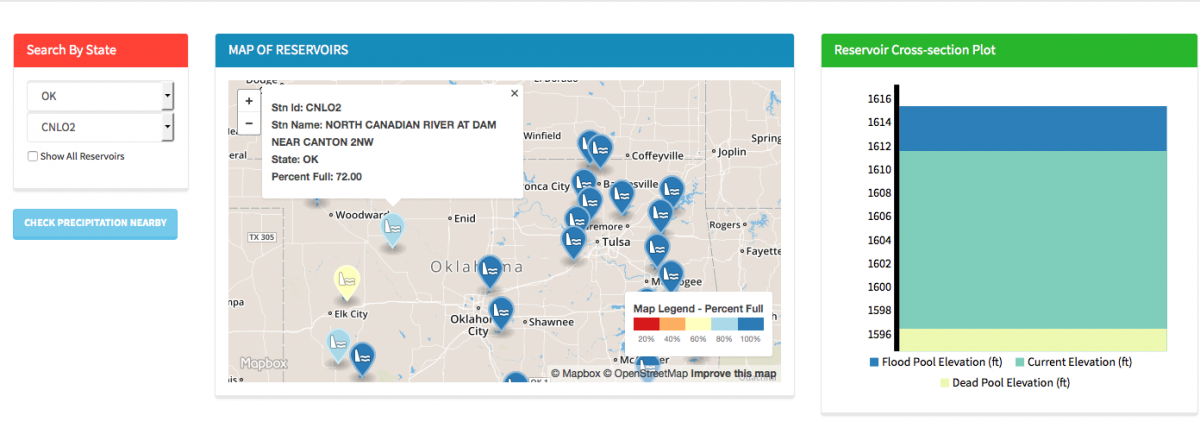On Monday, October 26, 2015, the Water Reservoir Data Visualization Tool became available. The tool can be found in our Data Tools section here.
During the Southern Plains drought, meetings with drought managers and planners at regional drought assessment forums and during drought management webinars revealed that numerous user groups desire ready access to information describing current and historical reservoir levels across the region. Unfortunately, reservoir level information is housed in many disparate places and managed by a number of agencies, including the US Army Corps of Engineers, US Bureau of Reclamation, river basin management authorities, and others. As a result, the region is lacking a unified source of accessible reservoir data. Many websites that provide reservoir status lack historical data, or at least an easy, visual way to compare across time. For example, comparing reservoir status to a previous drought or to average conditions for the time of year can require downloading numerous files into spreadsheets and sorting and calculating. This creates barriers to understanding contexts of emergent drought situations.
The Southern Climate Impacts Planning Program and the Southern Regional Climate Center incorporated suggestions from stakeholders to create a web-based reservoir tool, the Water Reservoir Data Visualization Tool. This tool displays water reservoir data for reservoirs located in Texas, Oklahoma and Louisiana. Information in the tool includes a reservoir cross-section plot that highlights current elevation, dead-pool, and conservation pool elevations, a summary of physical reservoir information, reservoir levels over time, elevation-area-capacity curves for each reservoir, and precipitation data. Reservoir data sources include the Texas Water Development Board, US Geological Survey, and the US Army Corps of Engineers.
One aspect that makes this tool unique is that by using NWS Cooperative Observer Data via the Applied Climate Information System (ACIS), the SRCC matches nearby precipitation-reporting stations to each reservoir. Users are then able to select from nearby sites to examine precipitation in relationship to reservoir response both at the site of the reservoir and also upstream sites important for generating runoff.
As we have seen with the recovery from drought in parts of region, reservoir response was lagging much longer than drought management experts anticipated. Having real-time information that can be compared spatially across a region and temporally in relationship to previous droughts can help water resource managers better anticipate such lagging responses and consequently improve their management decisions related to water availability.

